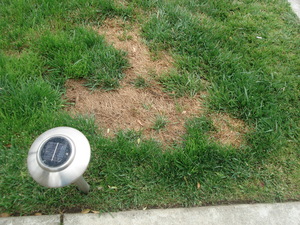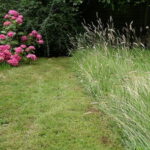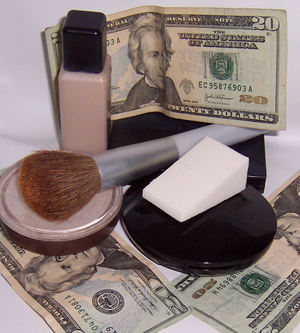A lot of homeowners are faced with problems on how to deal with dead lawns due to the past summer’s drought and heat. Most of these lawns had turned dry and brown. Those with bigger lawns would mean a bigger problem to tackle. There are different ways to tackle dead or brown lawns. Listed below are the basic ones:
1) Seeding and Reseeding: Fall is the best time to reseed your thin, dying lawns. The seeding season is from mid September to mid October in Northern California. Check out your areas when the best time would be. Normally this is when the temperatures start to cool down a bit. Try not to seed later than what is recommended in your areas. If you do so, the grass may not be able to survive as we go closer to the winter season.
How to Reseed:
a. Using a hoe, scruff up the soil surface where the existing grass is green. This will create a space for seeds to settle. You can use a core aerator or slice the soil surface with a power rake; this is a method of choice if the problem area is wider.
b. Sprinkle the seeds on the problem areas, and then spread a fertilizer that works well with the newly planted seeds. Water lightly two or three times a day to keep the soil moist.
c. Once the seeds start to germinate, water less frequently but more deeply. When you mow the lawn base it on the existing height of the grass.
2) Put New Sods: If the problem areas are bigger and ifthe rainy season is getting closer and your lawns remain dry and dead-looking, you may want to consider laying down new sod. This option will give you faster results and would give you enough time to get the grass to settle in the new environment before the winter season starts, most especially in those places that have snow.
How to put sod:
a. Remove old grass and its roots by using a sod cutter.
b. Then use a hoe to scruff up the soil.
c. Spread starter fertilizer by using a rake into the areas you will put the sod.
d. Lay your sod on problem areas.
e. Water frequently so that the grass does not dry up. Watering helps new sods settle faster in its new environment. It is important to water up to an inch or for about 30 minutes everyday.
3) Controlling Weeds: Fall is the best time to get rid of perennial weeds. Weeds are known to spread and contribute to the decay and demise of lawns. By getting rid of them before they drop seeds to the soil, you can prevent them from spreading and damaging the rest of your lawn.
How to Control Weeds:
a. While the soil is moist start pulling weeds. It is best to do this after watering so that it is easier to pull them off.
b. You can use herbicide solutions and spray them on to kill the weeds- Round Up is one example of non-saturated herbicide that you can use.
4) Fertilizing: Some lawns can still be saved by applying lawn fertilizers. Apply lawn fertilizers to your lawns to help revive your dying lawn. Make sure to water them down into the soil so that they can seep into the roots of the grass.
How to Fertilize your Lawn:
a. If you live in areas where it is still hot and dry, fertilize only if you can water regularly.
b. Fertilize only during cooler times of the day. If you fertilize when the air temperatures are cool, nutrients in the fertilizer will be used to strengthen and develop roots giving you a healthier looking lawn.
c. Do not over fertilize, follow the directions and use only the recommended amount for the size of your lawn.
d. Apply a second application of fertilizer in the middle of fall season for added benefit.
Hopefully these tips can help revive your lawns this fall so that they can survive through the winter season and be able to give you beautiful and healthy looking ones next year!
Reference:
- Home and Garden





